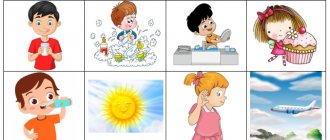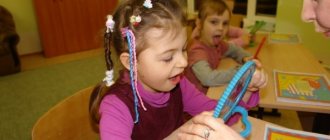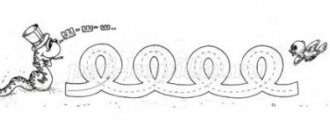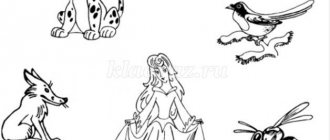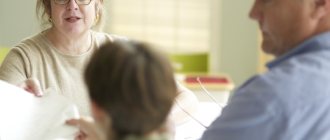Problems will certainly go away
The work of a speech therapist for dysarthria is aimed at restoring the softness of speech. The articulation apparatus is warmed up through special exercises. Massage is included in the treatment. As the patient regains the ability to speak, the doctor begins to work on speech clarity.
Individual speech therapy sessions for dysarthria include massage, psychological consultations, physical therapy, including exercises to restore movements. The specialists of our Center are able to awaken interest in classes even in those children who initially do not perceive speech therapy classes as something attractive, so the results are not long in coming. At the same time, treatment with medications is carried out.
Only through the interaction of the child himself, his parents and several medical specialists can one count on a quick and effective result.
Dysarthria - symptoms and treatment
The following forms of dysarthria are distinguished depending on the damage to brain structures [9].
Bulbar dysarthria is a consequence of damage to the bulbar group of cranial nerves: glossopharyngeal, vagus and hypoglossal. Characterized by weakness of articulation muscles, decreased muscle tone. As a result, speech is slurred, extremely slow, and the face is depleted of facial expressions.
Subcortical dysarthria occurs with lesions of the subcortical nodes of the brain. It is distinguished by the presence of hyperkinesis - violent facial movements uncontrollable by the child. Muscle tone changes from normal to increased. The tempo-rhythmic organization of speech suffers.
Cerebellar dysarthria is observed when the cerebellum or its connections with other structures of the nervous system are damaged. It is distinguished by scanned, “chopped” speech. There is no smooth transition from one word to another.
Cortical dysarthria , as the name suggests, is associated with damage to the cerebral cortex, namely, the lower part of the anterior central gyrus of one or both hemispheres. Also, cortical dysarthria is diagnosed when the dominant hemisphere is damaged (for right-handers - left, for left-handers - right) in the lower postcentral parts of the cortex. Children with this form are good at mastering isolated pronunciation of sounds, but have great difficulty using them in the flow of speech, and sometimes skip them altogether.
Pseudobulbar dysarthria is noted with bilateral damage to the motor corticonuclear tracts connecting the nuclei of the cranial nerves of the brain stem with the cortex. Characterized by the inability to organize clear rhythmic movements. In early childhood, such a child often chokes and has difficulty chewing; at an older age, a number of speech problems are discovered due to poor mobility of the articulatory muscles; speech is extremely slurred.
There are several degrees of dysarthria [6]:
First degree. Most often they talk about erased dysarthria; in this case, defects in sound pronunciation may be barely noticeable to others. They are identified by a speech therapist and, when corrected, are particularly resistant, which means that a lot of time and effort will have to be spent. As a rule, such children are seen by a neurologist at 1-2 years of age, but thanks to the plasticity of the child’s nervous system, many symptoms are compensated for by 4-5 years, and the child “outgrows” them. An unpleasant surprise is persistent problems with sound pronunciation in preschool age.
Second degree. Defects in sound pronunciation are very noticeable to others, but overall speech remains understandable. Along with speech symptoms, psychological symptoms are also observed. Often there is a deficiency of fine and gross motor skills, some clumsiness, behavioral disorder, emotional-volitional disorder, attention deficit disorder, hyperactivity, etc.
Children with the first and second degrees of dysarthria, as a rule, have fairly intact thinking.
Third degree. Understanding the speech of a dysarthric child is difficult for others. It is often not clear what the child is saying. Non-speech symptoms are extremely pronounced. A critical level of speech underdevelopment has the most negative impact on the behavior and thought processes of the child. We can talk about disruption of almost all mental functions: memory, attention, thinking, emotional-volitional sphere, etc.
The fourth is the most severe degree. Speech is almost always incomprehensible even to the closest people or is absent altogether.
You can count on complete correction of sounds in speech with the first and second degrees. The third and fourth degrees are diagnosed for severe lesions, for example, in children with cerebral palsy (CP), the prognosis for correction here is less optimistic.
Summary of a logorimic lesson for children with dysarthria
Summary of a logorhythmic lesson for first grade children with dysarthria.
Topic: "Toy Store"
Goals:
Educational:
— Expansion of vocabulary on the topic “Toys”;
-To develop skills in quantitative sound analysis through the rhythmization of words.
Corrective:
-Strengthen speech skills with movements, improve general, fine and articulatory motor skills, development of facial muscles;
Educational:
— Develop self-control skills through games and exercises.
Equipment:
kokoshniks (ball, cat, skate), bow for girls - dolls, toys (ball, cat, horse, doll), wall mirror.
Progress of the lesson
Introductory walking
Formation, greeting, posture control. To the melody of a children's song.
-Today in class we will repeat what we learned in the last lesson. And I suggest you go shopping.
1) Development of diaphragmatic breathing
Children lie on their backs, the teacher places something light, a toy, on their stomach. We breathe through the diaphragm and watch the book move up and down.
2) Development of speech breathing.
To the music “horse” - from P.I. Tchaikovsky’s “Children’s Album” - a “horse” runs out. Freely dances mainly in a straight step from a side canter. Children repeat the dance steps after the “horse”. “horse”: I’m not a simple horse, I’m a groovy horse Gop - gop, clop - clop, Take me away, my friend! Children: We buy a toy and take it with us. “horse”: Before you pick me up, learn to repeat... (children do breathing exercises).
Some types of musical and rhythmic exercises.
— What types of stores are there? (grocery, household, furniture, clothing, children's toys, etc.) - What can you buy in them? (explain what can be bought at a grocery, hardware, etc. store). Let's go to the toy store! - What can we buy there? (toys). - Why do we need toys? -We stand in a circle and “go” to the toy store.
Development of attention. Game “We will go right first...”
To the music, the children go to the store; at the signal from the speech therapist, the children change the direction of movement.
- Now we are going to the toy store, as soon as I give the signal (right, left, forward, backward) you must go in the right direction.
- ding - ding - ding, ding - ding - ding, Let's open the store! Come in, come in, choose what you want!
2) Exercises to regulate muscle tone.
-Under the Russian people. the melody “Is it in the garden...” comes out “Vaska the cat”. “cat” - I am a cat - a cat. I'm good at catching mice. I sing songs to the children, Bayu - Bayushki - Bayu. Teacher: Shall we buy a cat? Children in chorus: We buy a toy and take the “cat” with us - Before you take me, learn to repeat. Children perform muscle relaxation exercises (lying on your back, stretch, while tense, count to three at a slow pace and relax), creative gymnastics (angry cat pose - pronouncing the sound “F”, good cat pose, saying “MEOW”).
What forms of the disease are observed
Considering the level of distribution of damage to speech function, bulbar, pseudobulbar, extrapyramidal, cerebellar, and cortical forms are distinguished. The formation of the prosodic component of speech in dysarthria occurs through singing, during which it is necessary to change the strength of the voice and intonation. Exercise, breathing and pronunciation exercises are of no small importance when correcting voice pathologies.
The complex of effects of speech therapy classes for dysarthria allows you to:
- develop the articulatory apparatus,
- develop your voice (timbre, strength, pitch, range),
- develop breathing (depth and duration of inhalation and exhalation).
Timely commencement of speech therapy work for dysarthria in preschool children on an ongoing basis will lead to rapid correction of speech function.
Therapeutic gymnastics is part of logorhythmic work with patients who suffer from dysarthria. It is compiled in conjunction with a speech therapy correction course.
Corrective speech therapy work for dysarthria is aimed at developing static movements; formation of fine motor skills of the fingers; education of the movement of the limbs and torso with the gradual introduction of work with things; improving the condition of facial muscles; training of all types of memory, attention; gradual development of healthy breathing skills; victory over prosodic disorders in disease.
Speech therapy work to overcome dysarthria includes general motor warm-up; voice, breathing, articulation gymnastics; mixed massage.
MAGAZINE Preschooler.RF
MADOU "Joy" d/s No. 202, Nizhny Tagil, Sverdlovsk region, teacher-speech therapist Rudenko Elena AnatolyevnaSummary of an individual lesson “In the Land of Insects” (for a child with dysarthria) Objectives: 1. Automate the sound Ш in isolated form and in syllables. 2. Fix the names of insects. 3. Develop articulatory motor skills. 4. Develop phonemic awareness. 5. Develop voice strength and intonation side of speech. 6. Develop a sense of rhythm.
7. Continue to form a directed air stream. 8. Develop fine motor skills and tactile sensations. 9. Develop memory 10. Develop the ability to complete tasks to the end.
Equipment: flat figures of insects, pictures with symbols of articulation exercises, a ball umbrella, a simulator for producing a long air stream, symbol cards with articulation organs, chips with letters, a magic chest, a screen, flat flowers, vowel letters, a screen, balls with images of symbols different emotions.
Organizational moment: Today we will continue to learn how to correctly pronounce the sound Ш. And insects came to visit us today. They also want to learn how to pronounce this sound. Shall we teach them? And we will learn from them hard work and diligence. But they are very small and we will not be able to examine them. I came up with an idea, we will increase them! To do this, you need to complete the task: Clap just like me And then there will be a transformation (Repetition of the rhythm. The speech therapist claps quietly, and the child loudly) XX-XX X-XX XX-X XX-XXX Well done! So our insects have become big. (They go behind the screen. The child looks at the enlarged insects) Look how many guests there are.
In order to pronounce the sound correctly, I invite you to warm up. This beautiful butterfly will help us
MASSAGE WITH ELEMENTS OF ACUTE MASSAGE (performed by a speech therapist and a child) A large butterfly flew to us and began to stroke our face with its wings. stroking movements from the middle of the forehead to the temples and to the chin (performed by a speech therapist) And the little butterfly is not far behind. (performed by a child) So the beetle came running and began to stomp, tapping movements with the tips of his fingers from the ears to the nose (performed by a speech therapist) And behind him was the son - a small beetle. (done by the child) Here are some more paths. Let’s run along them a little. Massage movements to the upper and lower lips. They were running, in a hurry, and suddenly stopped. They twirled and twirled. They twirled and twirled. Massage the points under the lower lip and under the chin. Quickly, quickly left. Then the grasshopper jumped up and invited him to play with the ball. EXERCISES TO IMPROVE ARTICULATIVE MOTOR SKILLS We hit the ball (ball probe) with the tongue - Up, forward, down, forward (we reach the ball with our tongue) - Left, right turn - The ball flies into the mouth. - you grab the ball with your lips and hold it tightly (grab the ball with your lips and hold it.) And a bee also flew to us. She's been working since morning:
flew from flower to flower, collected nectar, and in the morning kneaded the dough (exercise “LET’S GO TO A NOSTOBIENT TONGUE”) Cut it into pieces (we walk along the tongue with our teeth) Rolled it out with a rolling pin (stroked the tongue with our teeth) Baked pies (pinch our lips with our fingers) Baked pancakes (exercise “SPATULA”), let it cool Let’s try a pancake (imitation of chewing and swallowing) Delicious! And it’s even tastier with jam (exercise “TASTY JAM”) And now let’s drink tea (exercise “CUP”) EXERCISES to form a long exhalation. He’s so hot, let’s blow (control “FOCUS”) And one bumblebee ate so much pancakes that he got fat and couldn’t rise above the flower. Let’s help him, take a breath through his nose and blow with his mouth for a long, long time so that the bumblebee hangs in the air. And who is this? Of course, an ant. Let's tell him how to correctly pronounce the sound Ш. ANALYSIS OF ARTICULATION OF THE SOUND Ш (Selection of cards-symbols with organs of articulation) LIPS - pulled forward TEETH - brought together TONGUE - wide, rises up, looks like a cup AIR STREAM - warm VOICE - does not work
We turn the pictures over, we get an image of the letter Ш Look, we have chosen all the pictures correctly and now we have the letter of our sound SH in front of us. And the ant brought you twigs and suggests that you also lay out the letter SH. The child lays out the letter. On the path, there are 3 columns exactly in a row PRONUNCIATION OF THE ISOLATED SOUND Ш. The wings of our insects rustled SHSH Our fingers ran over the pebbles with the letter SH Press each pebble and say the sound Ш (we walk with our fingers along the letter-pebbles) While we were walking, several pebbles with the letter SH got mixed up with others Put your hand in the chest to touch the letters find it inside.
DEVELOPMENT OF PHONEMATIC HEARING. But a grasshopper jumped to meet us. He can jump so high and now we will play this game with him. If you hear the sound Sh, jump in place. BUMBELE, SPIDER, MIDTY, CENTIPEDE, MOTH, MOSQUITO, ANT AUTOMATION OF THE SOUND IN SYLLABLES Look, an ant has come running to us. He suggests walking around the clearing and rustling the blades of grass and collecting all the letters. We go from flower to flower, collecting the vowels A, O, U, ShSHSH_________ A The result is the syllable SHA SHSHSH________ O The result is the syllable SHO SHSHSH________ U The result is the syllable SHU We collected all the letters. We'll put the letters on a ladder. Our ladder turned out to be magical. When we climb along it, the ant will turn into a big ant, and then again into a small one (Sh) U (Sh) O (Sh) A (First in a thin voice, then louder and louder and back again). I made the ant happy. MIMIME CHARGING And the ladybug also wanted to play with you: Listen carefully, remember, repeat with the same mood. (The speech therapist pronounces syllable rows with different emotions and rolls a ball depicting the symbols of these emotions to the child. The child repeats them and rolls the ball back) SHI-SHI-SHA - fun SHO-SHO-SHU - angry SHA-SHA- SHI - surprised
All the insects liked the sound Ш and they wanted the sounds Ш to be in their name. You and I will call them now. I'll start, and you add the syllable SHA. Butterfly MASHA Ladybug NATASHA Beetle PASHA Bee DASHA Ant GoSHA RESULT What a great fellow you are! You worked so well, completed your assignments so well, and became even better friends with the sound Sh. Who helped you today? INSECTS . Now close your eyes and remember what insects there were? You listed them all, well done! And another bee will fly to your honeycomb. (At the “Our Successes” stand we put a picture of a bee in the honeycomb pocket)
| Next > |
The work of a speech therapist-defectologist for dysarthria
In this case, the speech pathologist-defectologist takes on the responsible role of correcting existing disorders in the child’s speech. It is very important that parents understand the need for regular classes and mandatory homework.
With the right approach, the prognosis for the erased form of dysarthria is the most favorable. The child is fully capable of mastering correct speech and will be able to successfully study at school.
What is included in the classes:
- Articulation gymnastics. It is necessary in order to “teach” the tongue to take the correct place when pronouncing a particular sound.
- Exercises to develop correct speech breathing.
- Development of fine motor skills. It is widely known that the better the coordination of the fingers, the faster correct speech is formed.
- Formation of spatial orientation.
- Speech therapy tongue massage. Even due to minor brain damage, many children have disturbances in the tone of the articulatory apparatus. A special massage helps relieve excess tone or, conversely, strengthen the necessary muscles.
- Establishing the correct pronunciation of sounds.
